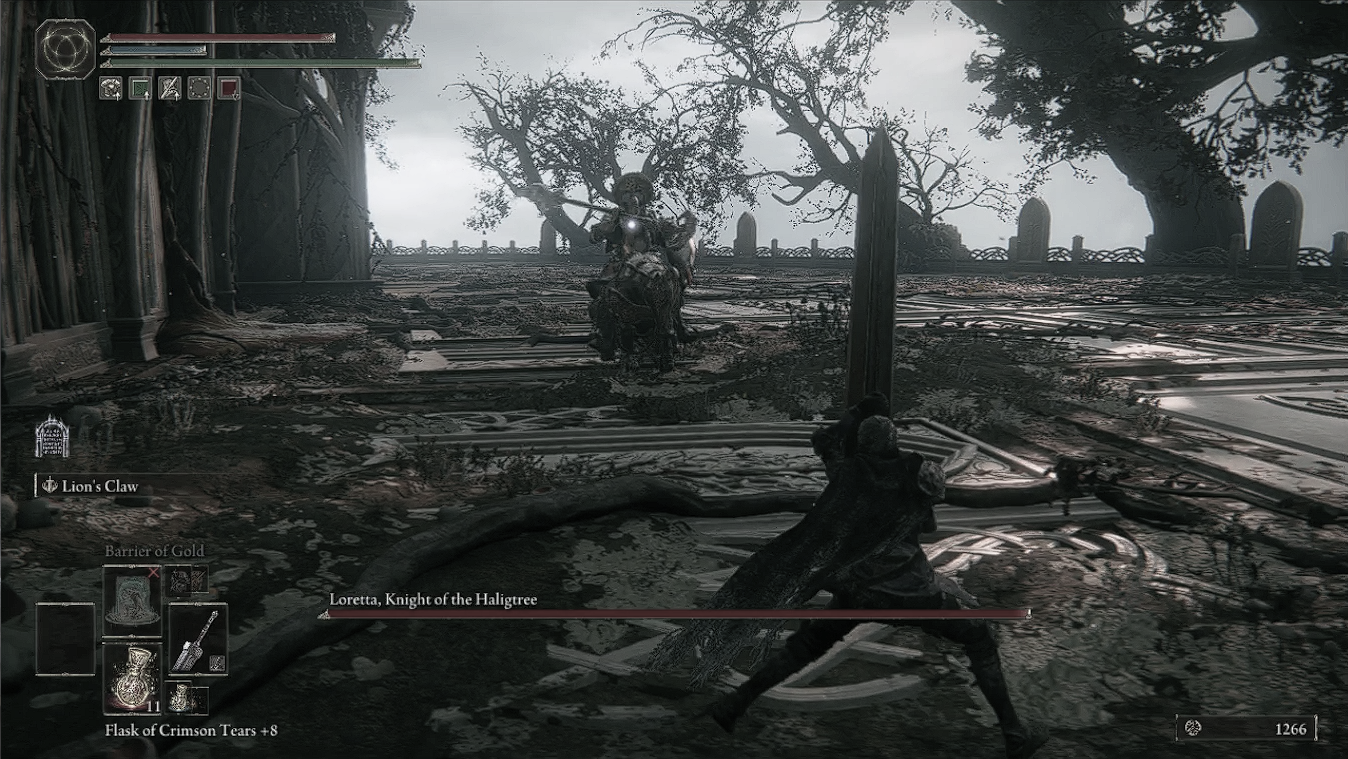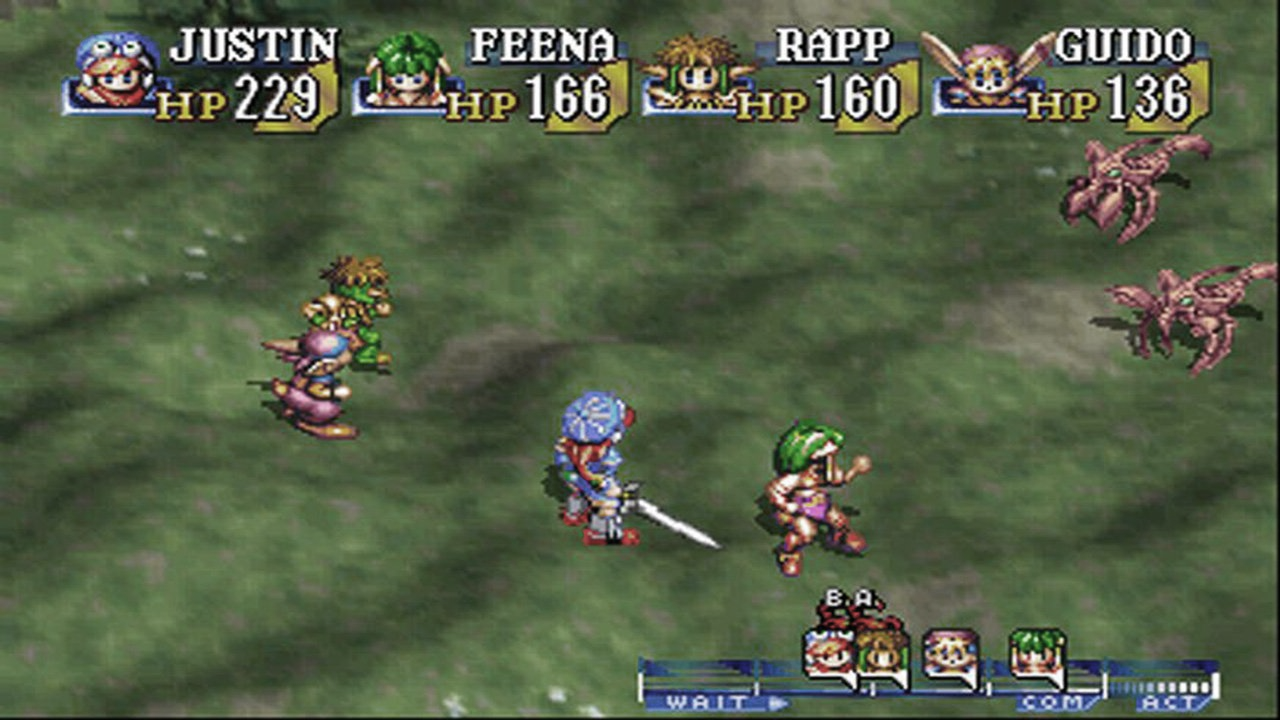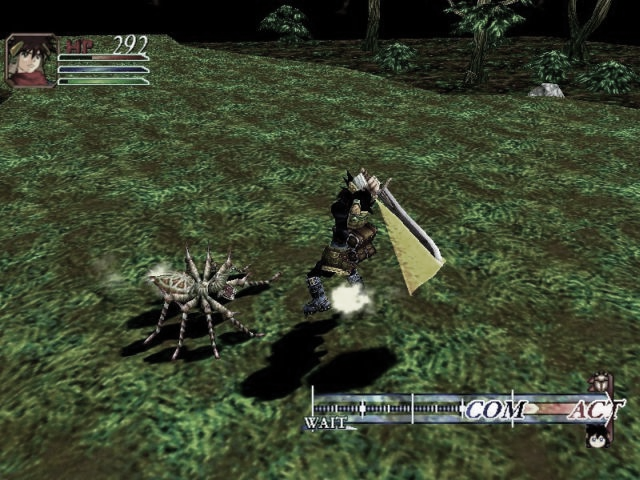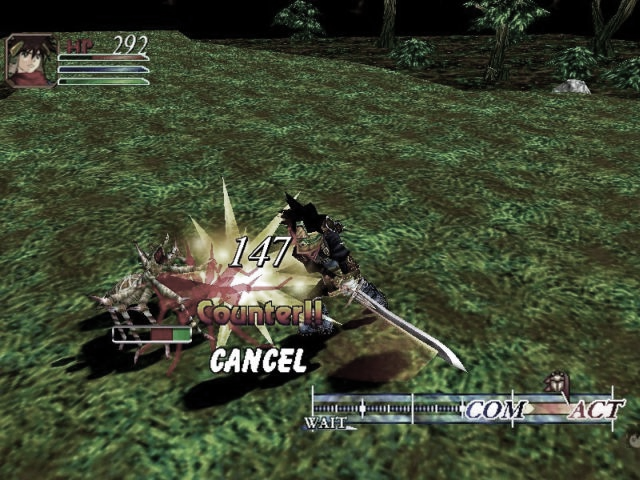The Gray Area (...)
Studying the appeal of JRPG combat.
I have no formal qualification in game design: I can only call myself a programmer. It's a curse in that I may lack the foundation that the academic side of game design provides, to whatever extent. But I think it can also be a gift, in that my own theory can grow organically, manifest from instead of projected unto my introspection and experiences in gaming.
And again, these ideas are nothing more than a perspective. Let it's value lie where it will.
That said, my current understanding of RPG mechanics, combat mechanics especially, is that no matter how complex or intricate the mechanics may be, there is but one concept that governs it, at the most fundamental level. That is:
A SET OF CHOICES
We can start by confining our discussion, as we did last time, to a moment in gameplay, and expand outwards as necessary.
At an arbitrary moment in JRPG combat, you are presented with a set of choices. In the classic JRPG, these are laid bare to you in the form of a little window that appears on the battle screen.

As a player, your first instinct when presented with choices is to read and understand your current situation. My party's health? The enemy's health? My party's mana, and SP/TP? Turn order? Enemy capabilities? It's based on this understanding of the situation that you make your choice.

In fact, for a certain turn in any such game, you'll actually be making a sequence of compounding choices. If you choose to use a healing spell, for example, you then have to make the choice of which healing spell to use, and who to use it on. Let's narrow all this down to a single choice, though, and examine the process of decision making. Suppose we have three arbitrary options.

Let's represent our understanding of the situation with a highly complex graph, on which these choices can be placed.

Consider an instance where my understanding of the situation and choices are as follows:

You may be faced with a decision like this in any of the games shown above. If your leading character was at 1 HP, for instance, and you lose the battle if that character dies, the obvious decision would be anything that can heal your character.
If too many decisions in the game were of this kind, I'd imagine the game would start to feel too mechanical.
But what if our character had a damage-dealing ability... that scales with HP lost? And maybe another damage-dealing ability that could interrupt the enemy due to attack?

The decision is now a lot more difficult to make - and in turn, I would believe, a lot more engaging. Is Choice C really the best choice, or may I have slightly misjudged the situation? Choice B carries a little more risk, but maybe it's more in line with the grand strategy I've devised for this battle. Choice A is probably the safest bet, but I won't be dealing any damage... and that may give the enemy too much of an opportunity to finish me off.

Self-explanatory.
If we can agree that this Gray Area is where we'd want the choices we present to land, as much as possible... then we should next try to identify the ways in which we can manipulate a set of choices in order to compress them into the player's Gray Area, and maintain this quality to decision-making.
There are two ways I would imagine this can be done, assuming that the validity of the representation above is sound:
(1) Manipulate the situation, thus manipulating choice placement on our graph.
(2) Manipulate the choices themselves, so that they err towards the center of our graph.
With that, we have our lens for this particular study. What should we inspect with it first?

Shown above is all the depth of a classic JRPG, embedded into an action combat system... deceptively simple enough for the three-person team behind Bleak Faith to make the mistake of trying to replicate it.
Loretta, Knight of Haligtree is charging towards me, At this moment in gameplay (and every second of a FromSoft boss fight) we can imagine a choice window appearing on the screen: Attack? Guard? Skill? Item? Evade? It's the exact same core framework, isn't it? My risk-reward analysis is a fluster - a confident decision is rare in my experience of this game.

Meaning to say, that even in an action RPG, the stream of choices to the player needs to be carefully orchestrated in order to keep them trapped in the Gray Area, and keep combat engaging. Unlike the classic JRPG, I don't have a plethora of different attacks at my disposal (unless I'm a filthy caster). My choices are few. But the masterwork in boss design...
Manipulates the situation, thus manipulating choice placement on our graph.
I believe what Grandia's combat system does so well, and the quality by which it's so engaging, is that it achieves the same 'fluster' with the IP system, through additionally...
Manipulating the choices themselves, so that they err towards the center of our graph.
In a battle against well designed enemies, which defines the situation in this case, it's two-pronged attack on the player's awareness. Time to dive deeper into how exactly this phenomenon arises.
THE IP SYSTEM
We should allow ourselves a little diversion, and take a brief look at the provenance of timekeeping in JRPG combat.
The renown Active Time Battle system (ATB) made it's first appearance in Final Fantasy IV. It was a change of revolutionary significance to turn-based combat in the JRPG, kicking off the timeline that brought us FFVII and Chrono Trigger.
Funnily enough, despite it's importance to the JRPG, ATB went on, with enough hindsight, to become the subject of much scrutiny. Detractive from the strategy of turn order, slower due to wait times, gimmicky in it's attempt to push urgency into navigating menus. A renaissance of discrete turns in the mainstream JRPG spelled the end of ATB's relevance outside of Final Fantasy.
The FF games took ATB and innovated vertically; it lived a long and prosperous life despite fundemental flaws. But ATB was more than the Active Time Battle system. It was a spark of ingenuity; an idea of philosophical significance, propogating for a short window of time in the JRPG space. The core idea was to be innovated upon elsewhere in higher form. Mainstream is the enemy of true innovation, after all.

In studying Grandia, I believe the distinction between ATB and it's philosophy is crucial. ATB introduced a form of timekeeping focused on adding a 'real-time' element to turn-based combat, pushing the JRPG in the direction of real-time action combat.
Grandia's IP system, on the other hand, took timekeeping... and made timekeeping turn-based mechanics.
Behold, the Cancel.


To know the success of Grandia's combat mechanics, you only have to play it for all of a few minutes. But let's take a shot at understanding what makes it such great gameplay.
So I put out a question, on Reddit of all places.
Are there flaws in Grandia's combat system?
I realize now that it's quite the offensive post to have put up on a dogmatic subreddit. But it did serve it's purpose in extracting some great insight from the game's cult following. The more inclined should definitely give it a read.

COMPLEXITY TENDING TO INFINITY
payl is typing...